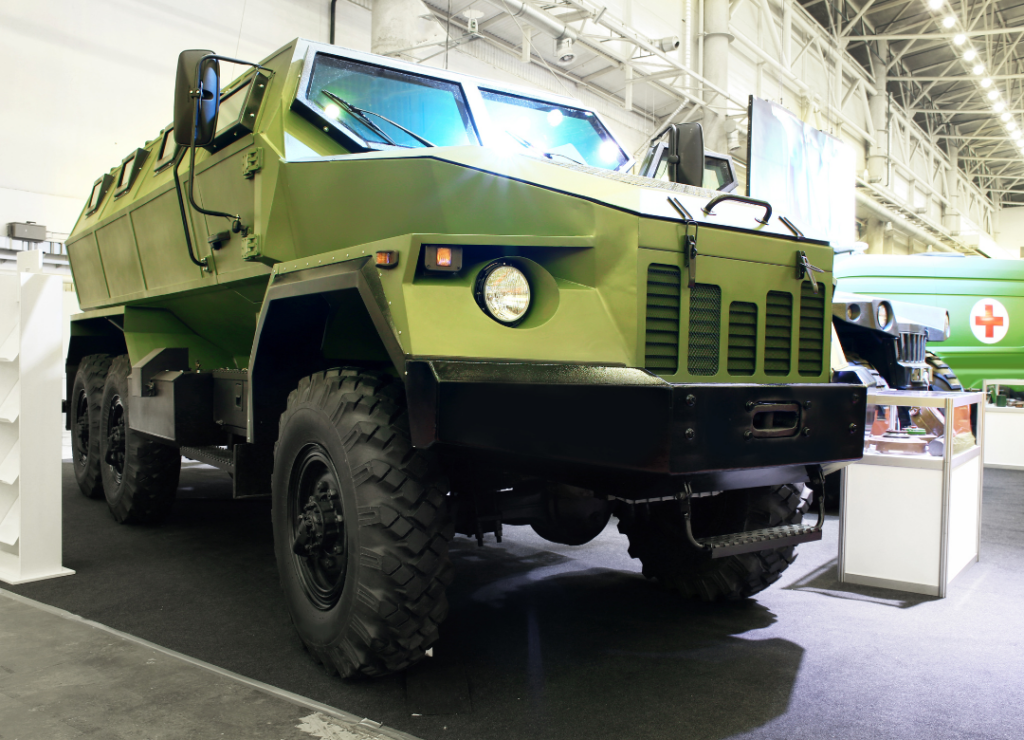MIG and TIG welding are commonly used techniques throughout the metal fabrication industry. However, when applications require the joining of materials that are typically challenging due to their unique properties, such as hardness or thickness, fabricators turn to a specialized technique known as ballistic welding to create a seamless and robust bond.
Ballistic welding is also the preferred solution for industries such as in defense, law enforcement, or security, where structural integrity, unparalleled strength, and resistance to impact are paramount.
How Does Ballistic Welding Work?
Ballistic welding involves the use of controlled explosions or high-velocity projectile impacts to create localized heating and bonding between materials. Unlike traditional welding methods that rely on heat to melt and fuse materials, ballistic welding utilizes the kinetic energy generated by these explosions and projectiles to create heating and plastic deformation, effectively causing the materials to fuse together.
This technique allows for the joining of dissimilar materials, including metals with different melting points or hardness levels, without compromising the overall structural integrity. Ballistic welding is often employed to manufacture armor plating, ballistic panels, and other components that require exceptional strength and resistance against ballistic threats.
Read More: Our Capabilities
Materials Used In Ballistic Welding
Ballistic materials are engineered substances designed to withstand and mitigate the impact of explosions and projectiles, enhancing the safety and resilience of structures and individuals. Various types of ballistic materials exist, each tailored to specific applications based on their unique properties. They are used in a wide variety of applications including traditional armor, vehicle protection, structural reinforcement, and even sports equipment.
Some of the more commonly used ballistic materials include:
High-Strength Metals
Metals such as steel, titanium, and aluminum alloys are commonly used in ballistic applications due to their high strength and ability to absorb and disperse kinetic energy, enhancing the application’s resilience.
Ceramics
Ceramics, particularly alumina and boron carbide, are renowned for their hardness and lightweight characteristics. These materials are frequently integrated into armor systems to provide robust protection without compromising the mobility and comfort of the wearer.
Composite Materials
Ballistic composites, composed of layers of fabric or fibers infused with resin, are designed to distribute and absorb impact energy efficiently. Aramid fibers such as Kevlar and high-density polyethylene (HDPE) are popular choices in ballistic composite materials.
Glass-Reinforced Polymers
Fiberglass and other reinforced polymers offer a balance of strength and weight, making them suitable for various ballistic applications, including vehicle armor and personal protective equipment.
These materials are typically available in various forms, including sheets, panels, and rolls.
What Are The Benefits Of Using Ballistic Welding?
Ballistic welding excels in producing joints with superior strength and durability. The localized heating and pressure generated during the process create metallurgical bonds that surpass the strength of conventional welding methods. This strength is particularly advantageous in applications where materials need to withstand high-impact forces, such as ballistic projectiles or explosions.
Unlike conventional welding, ballistic welding produces a minimal heat-affected zone (HAZ), which is advantageous in preserving the structural integrity of heat-sensitive materials and reducing the risk of distortion or degradation.
Ballistic welding also offers a faster joining speed than other welding techniques. The long-term durability and performance of products made with this method often outweigh the initial investment, making it one of the most cost-effective solutions on the market.
Traditional welding methods may struggle with joining dissimilar materials, especially those with varying hardness levels. The versatility of ballistic welding’s material compatibility makes it an ideal choice for applications where a combination of specific materials is necessary to meet particular performance requirements.
Partner With World-Class Experts In High-Quality Ballistic Welding
Arrow Off-Road has the skills, technology, and expertise in creating products that provide robust protection against ballistic threats. Our facilities are certified in accordance with the Defense Production Act and the Controlled Goods Regulations, and our ballistic welders are trained and certified under D-0040.
We’ve used ballistic welding to fabricate parts and components for dozens of military applications, such as LAV armored vehicles, ballistic and steel hulls, aluminum turrets, ballistic fuel tanks, obstacle blades, add-on armor, military storage, and transmission containers, and much more.
Whether it’s for military, defense, law enforcement, or civilian safety applications, our experts will listen to your requirements and deliver the best recommendations so you get the results you need, every time.
Get A Project Quote From Arrow Off-Road For Your Next Design And Fabrication Project
Partner with Arrow Off-Road for precise machining, welding, and fabrication solutions customized to your requirements and application. Quickly request a quote for your next project to experience the Arrow difference in quality, precision, and service for yourself. Get in touch with us today!
